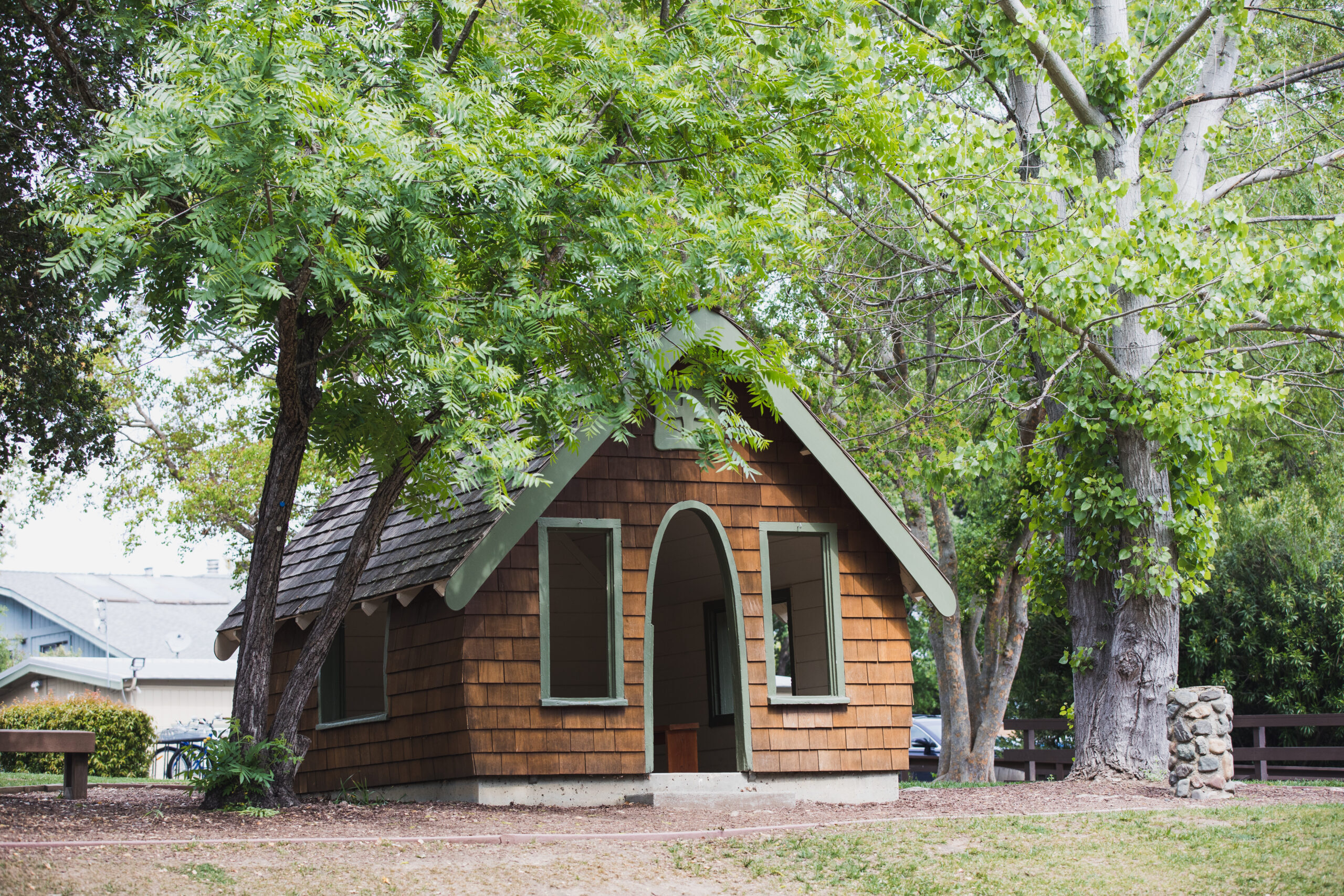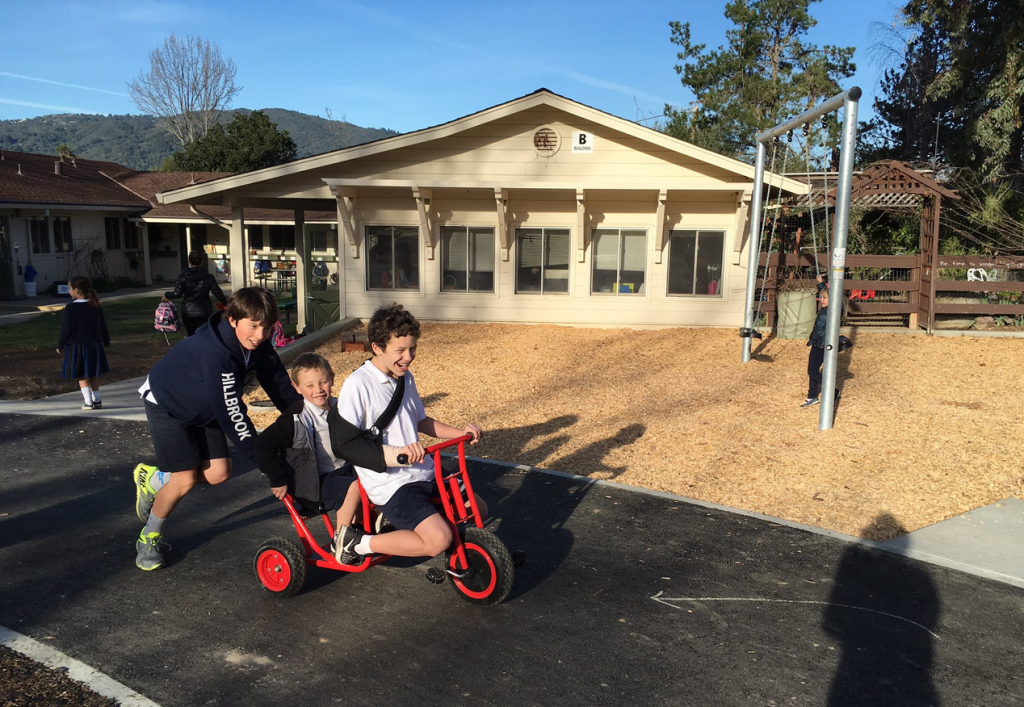There was a minor stampede on Monday morning, as our youngest students raced out of cars and off of buses to head over to the newly renovated and reimagined JK-2 playground. Joyful laughter and enthusiastic yelling could be heard as children bounced across the bridge, came flying out of the treehouse slide, wildly twirled on the spinners, and ran around the track that loops the heart of the playground.
Over the course of the last few days, children have continued to explore their magical new space. Each recess groups of children can be found digging in the sand, an occasional burst of water from the hose revealing the wonderful and messy things that happen when sand and water mix. Other children have been drawn to the Imagination Playground blocks, big blue oversized “tinker toys” that can be connected, moved, and turned into everything from a roller coaster for small blue balls to the walls of an imaginary house. Other children can be seen climbing, spinning, jumping, and otherwise exploring the various structures, seeing the world around them from many and varied angles. Be careful when crossing the oval track, as an occasional tricycle speeds past, with a second tricycle more often than not close behind.
At a time when articles increasingly lament the disappearance of play and joy from schools, I am proud to be at a school that prioritizes the needs of children. Made possible through the extraordinarily generous support of families who have participated in the early stages of the “Be Your Best” Capital Campaign, our new state-of-the-art playground creates a space for children to explore, imagine, create, move, and discover.
To be clear, the playground is not simply a nice to have amenity, it is an essential extension of the classroom. Erika Christakis, author of The Importance of Being Little, notes the power of play versus more traditional, structured in-class activities in a recent interview with NPR. She says:
“[W]atching kids build a fort is going to activate more cognitive learning domains than doing a worksheet where you’re sitting at a table. The worksheet has a little pile of pennies on one side and some numbers on the other, and you have to connect them with your pencil. That’s a very uni-dimensional way of teaching skills. Whereas, if you’re building a fort with your peers, you’re talking, using higher-level language structures in play than you would be if you’re sitting at a table. You’re doing math skills, you’re doing physics measurement, engineering — but also doing the give-and-take of, “How do I get along? How do I have a conversation? What am I learning from this other person?” And that’s very powerful.”
When you explore the playground, you will notice something that I think is quite profound – the space is designed to allow children to structure and control it. While there are different types of activities – climbing structures, sandpits, spinning objects, swings – they are all activities that tap into the world of a child’s imagination and physical needs. As adults, we consistently make the mistake of overscheduling and overstructuring our children’s lives. The results have been well-documented, with colleges and workplaces describing a generation of young adults – the product of checklist childhoods – who struggle to make their own decisions, solve their own problems, and manage their own lives.
A children’s playground full of adventures, challenges, joys, and skinned knees (that’s right, we can’t forget the blessings of a skinned knee) provides the foundation that children need in order to find success both in school and in life. Take a moment to visit the playground when you are on campus next time to experience the joy, the energy, the imagination, and, yes, the education that is happening each and every minute that children are at play.
Cross-posted from this post in Hillbrook Voices, the Official Blog of Hillbrook School.

